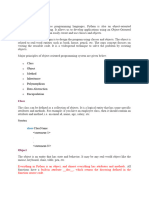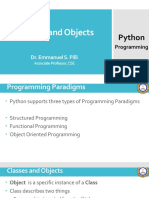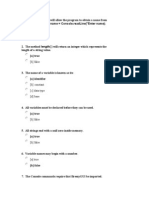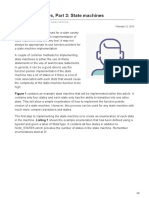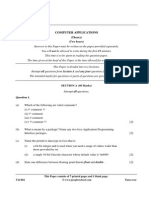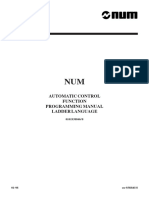0% found this document useful (0 votes)
20 views38 pages1.classes and Objects
The document provides an overview of classes and objects in Python, explaining their definitions, attributes, methods, and the role of constructors. It details the differences between instance variables and class variables, as well as the significance of the 'self' parameter in methods. The document concludes with a summary of key takeaways related to object-oriented programming in Python.
Uploaded by
rakeshpedamajji38Copyright
© © All Rights Reserved
We take content rights seriously. If you suspect this is your content, claim it here.
Available Formats
Download as PDF, TXT or read online on Scribd
0% found this document useful (0 votes)
20 views38 pages1.classes and Objects
The document provides an overview of classes and objects in Python, explaining their definitions, attributes, methods, and the role of constructors. It details the differences between instance variables and class variables, as well as the significance of the 'self' parameter in methods. The document concludes with a summary of key takeaways related to object-oriented programming in Python.
Uploaded by
rakeshpedamajji38Copyright
© © All Rights Reserved
We take content rights seriously. If you suspect this is your content, claim it here.
Available Formats
Download as PDF, TXT or read online on Scribd
/ 38







































